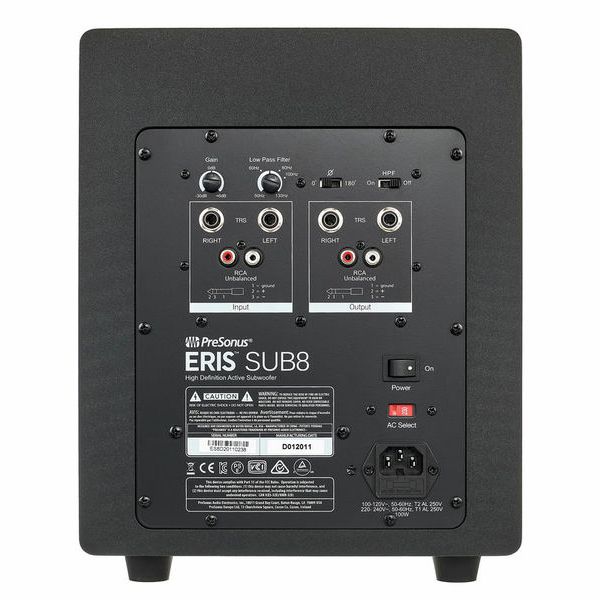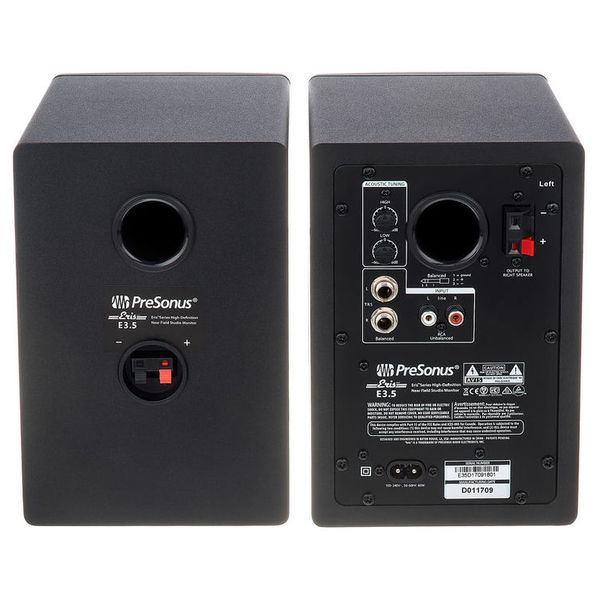My setup consist of:
1. Two 4 meters local brand 2 core 20/0.012 + 1 shielded 94/0.12 ( AWG 24 TC material ), 1/4 inch TRS balanced cable from subwoofer output to eris 3.5.
2. One 3 meters Right angle 3.5mm to dual RCA canare L-2t2s.
That looks problematic.
Let's recap the equipment.
The Eris Sub8 is this guy:
IEC Class I, balanced TRS + unbalanced RCA in and out.
And these are the Eris E3.5:
IEC Class II, balanced TRS + unbalanced RCA in and out.
You could go balanced into the sub and continue unbalanced into the monitors, but vice versa is likely to be problematic since I assume you are just plugging the 3.5 mm into a regular old PC, another IEC Class I device. That's ground loop issues almost guaranteed. Before waxing lyrical about cables, I would definitely advise sorting that problem out first.
If my previous assumptions are correct, this is the kind of cable you want to be making for the PC --> sub connection:
3.5 mm side: Connect shield L, shield R, cold L, cold R to sleeve (ground). Hot L to tip, hot R to ring.
2x 1/4" TRS side: Leave shields unconnected here. Cold L/R goes to respective ring, Hot L/R to respective tip.
Besides, I would recommend ditching the E3.5s as soon as you can. These are decent enough multimedia speakers, but their on-axis response is poor, and since I have set up a pair in the past, I can confirm that vertical dispersion is very uneven (due to the ultra-simple passive crossover, I'm guessing the usual single capacitor).
Erin's review
At the very least, a good helping of EQ is recommended to flatten out the response to an acceptable degree. Erin lists some DSP suggestions that I would look into. (You can reproduce the settings given e.g. in
PEACE. Note: Equalizer APO only works for shared mode playback, so if you insist on exclusive mode output, PEQ would have to be done within the player.)




